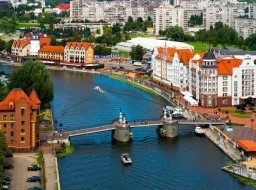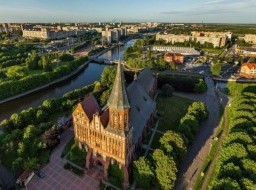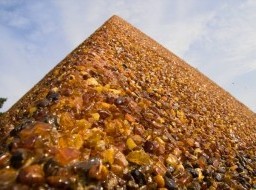Immanuel Kant's Tomb
Read the inscription on Immanuel Kant's Grave and learn which two things never ceased to occupy the philosopher's mind. The memorial to the great philosopher of the Age of Enlightenment is one of the few historical places from the German era that survived when the Soviets took over the city, thanks to an open letter written by an anonymous person. The letter, which cited Engels' writings to prove that Kant was important for communist ideology, saved not only the grave but also the ruins of the nearby cathedral. Kant was originally buried within the cathedral; the mausoleum was created in 1924. At the end of the 16th century, Albertina University bought a spot near the north wall of the main nave to establish a place for its professors to be buried. One of those tombs eventually saved the Cathedral in 1945. It was the second half of the 18th century when one of the founders of German philosophy, Immanuel Kant, gave lectures at the Königsberg University. He taught logic, ethics, metaphysics, mathematics, mechanics, natural science and geography. At the same time, Kant wrote several works and essays on his theory of knowledge, ethics, anthropology, religion and political philosophy. Besides his enlightened mind, Kant is also known for his discipline and pedantry: he was literally the man to synchronize your watch with. And he never left his home town of Königsberg. Vladimir Lenin considered Kant a forerunner of Karl Marx and Friedrich Engels. One of Kant's major works – his Critique of Pure Reason – was compulsory reading in the USSR's higher education system. It was the philosopher's tomb that saved the cathedral from removal by the Soviets. |







